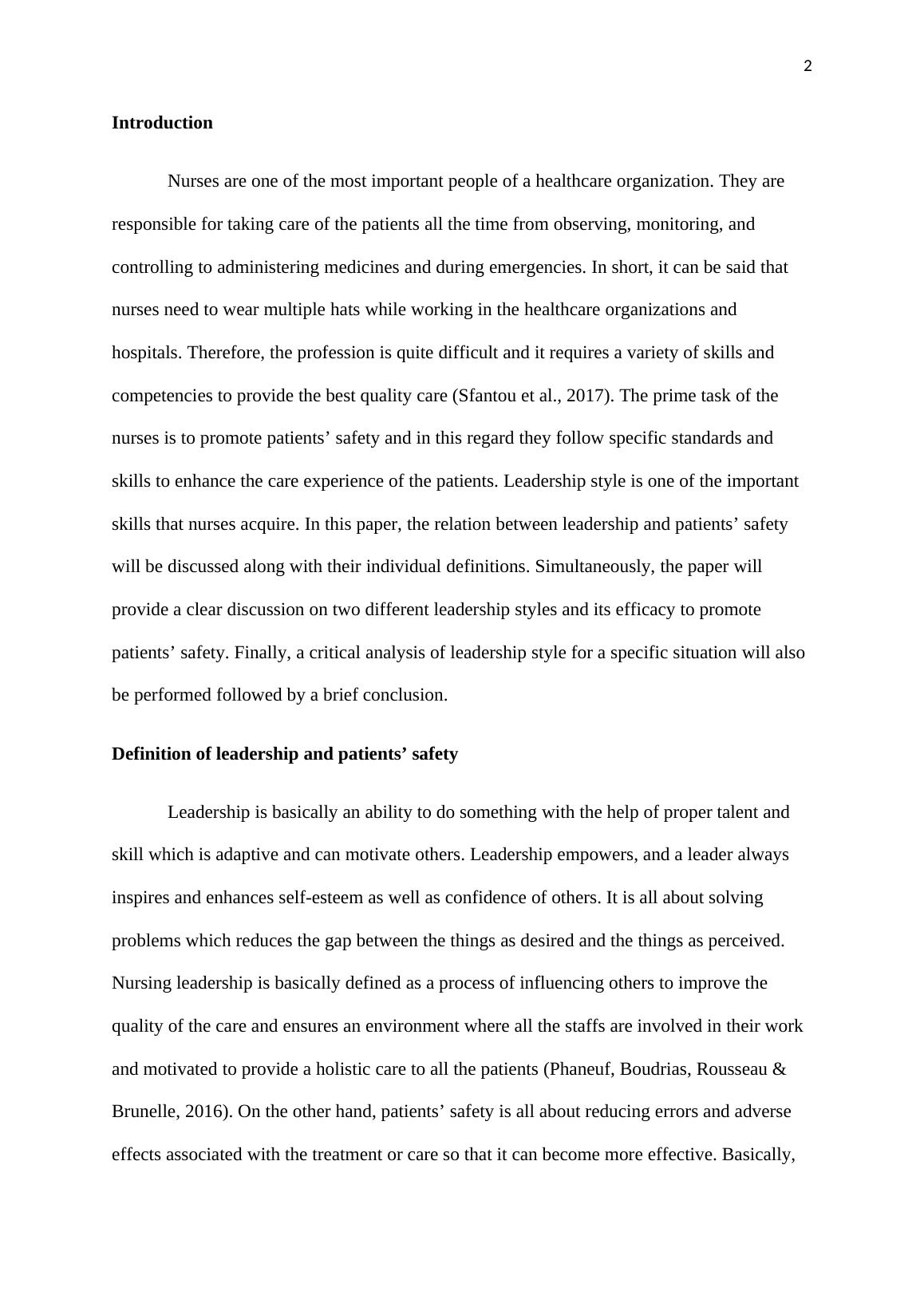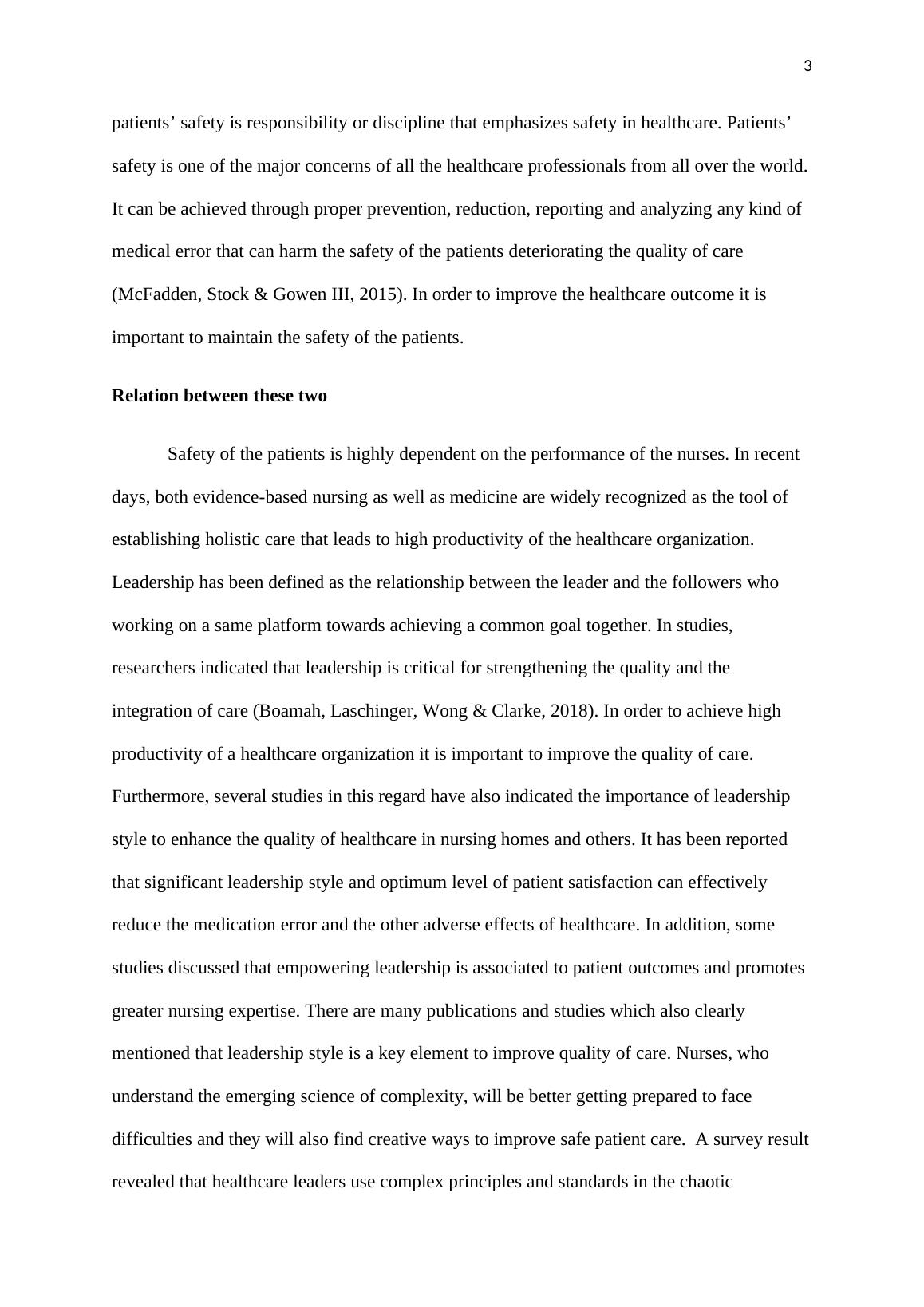Definition of Leadership and Patients Safety
Unit details for Clinical Leadership and Professional Relationships course in the School of Nursing and Midwifery
8 Pages2246 Words13 Views
Added on 2022-09-14
Definition of Leadership and Patients Safety
Unit details for Clinical Leadership and Professional Relationships course in the School of Nursing and Midwifery
Added on 2022-09-14
ShareRelated Documents
End of preview
Want to access all the pages? Upload your documents or become a member.
Leadership and Patients' Safety in Nursing
|8
|2169
|78
Leadership and Patients' Safety in Nursing
|8
|2235
|1
Nursing Leadership Patient Safety
|8
|1698
|62
Relationship between Leadership Styles and Patient Safety
|6
|1662
|209
Nursing Leadership: Improving Patient Safety and Outcomes
|8
|2185
|195
Relationship Between Leadership Style And Patient Safety
|9
|1990
|103



